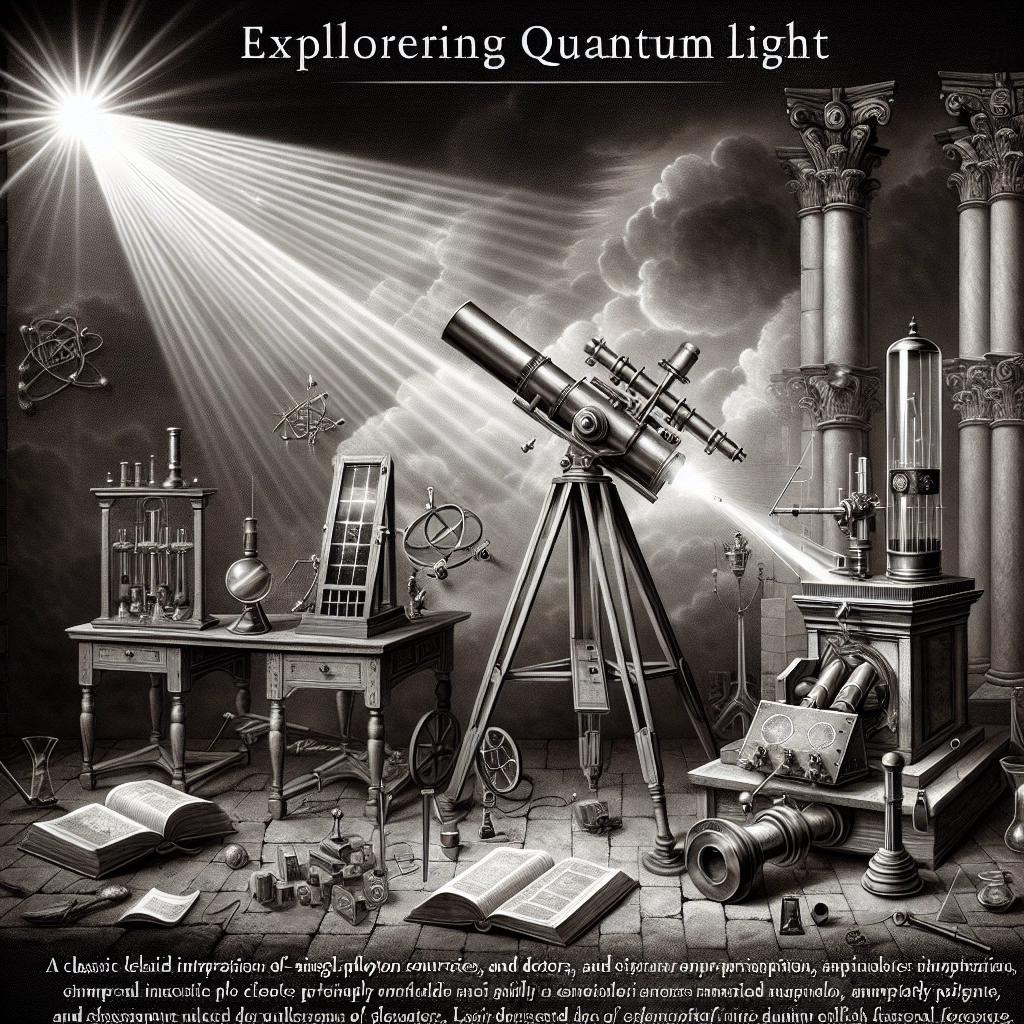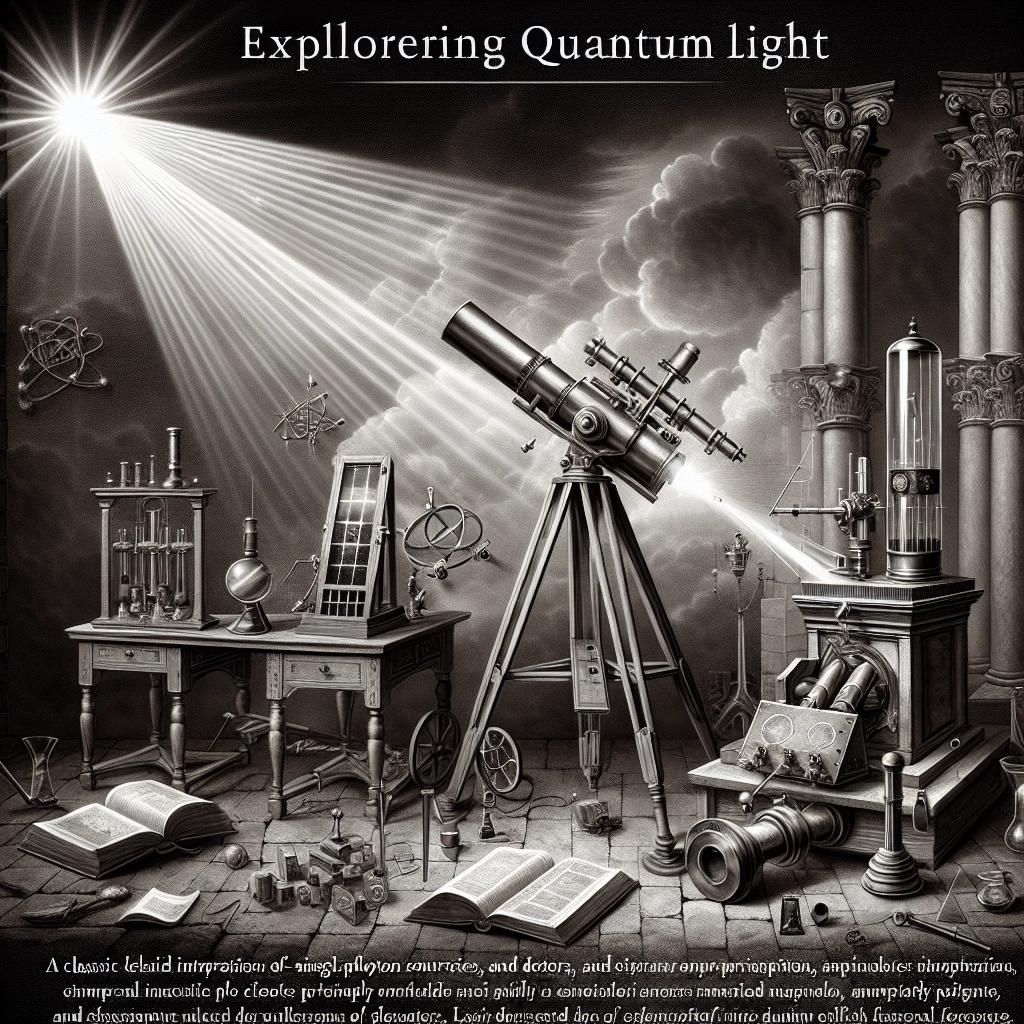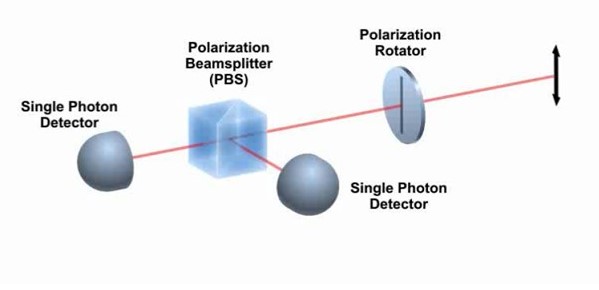Single-Photon Sources, Detectors, and Beamsplitters: Exploring Quantum Light
 Quantum Cyber Solutions
Quantum Cyber Solutions

Published on
Friday, June 14, 2024
Single-Photon Sources, Detectors, and Beamsplitters: Exploring Quantum Light
================================================================================
Authors

Name
Eric deQuevedo 😄
Twitter
🔬 Introduction: The Quantum World of Photons
Welcome, curious minds, to the fascinating realm of quantum optics! Today, we embark on an exploration of single-photon sources, detectors, and beamsplitters. These essential components form the backbone of many quantum technologies, from quantum communication to fundamental research in quantum mechanics. Let’s unravel the mysteries behind these quantum marvels.
💡 Single-Photon Sources: Generating Quantum Light
🎇 Classical vs. Non-Classical Light
In our everyday experience, light sources like light bulbs emit classical light, characterized by chaotic behavior due to the large number of independent photon emitters. A laser, although coherent, still falls under classical light as it emits multiple photons.
In contrast, a single-photon source is quintessentially quantum, emitting one and only one photon at a time. There are two primary methods to achieve this:
- Classical Approach: Attenuating a classical multi-photon field (e.g., laser light) to ensure single-photon arrivals. While this method can reduce multi-photon events, it also significantly decreases the frequency of single-photon events.
- Non-Classical Approach: Utilizing a two-level quantum system, such as a quantum dot or an excited atom, which emits a single photon as it relaxes from an excited state to its ground state. This method is truly non-classical, generating single photons with precise energy and frequency.
🛠 Single-Photon Detection: Capturing Quantum Light
🔍 Principles of Single-Photon Detection
Single-photon detectors are designed to respond to the absorption of individual photons, crucial for experiments and technologies that rely on quantum light. The efficiency and reliability of these detectors are paramount, with key metrics being internal quantum efficiency and signal-to-noise ratio.
⚡ Avalanche Photodiodes (APDs)
A prominent type of single-photon detector is the Avalanche Photodiode (APD). These devices operate under a high voltage bias, creating an avalanche effect where a single absorbed photon generates a cascade of electrons, producing a measurable electrical signal. This makes APDs highly sensitive and effective for detecting single photons.
🔀 Beamsplitters: Directing Quantum Traffic
🌐 Spatial Beamsplitters
A spatial beamsplitter divides an incoming photon stream into transmitted and reflected components. When a single photon encounters an ideal 50:50 beamsplitter, it enters a superposition state, with equal probabilities of being detected in either transmission or reflection paths.
📐 Polarizing Beamsplitters
A polarizing beamsplitter, on the other hand, separates photons based on their polarization. For instance, horizontally polarized photons might be transmitted while vertically polarized photons are reflected. This selective behavior is crucial for polarization-based quantum measurements.

⚛️ Quantum Mechanics in Action
🌌 The Superposition Principle
When a single photon enters a 50:50 beamsplitter, it does not simply take one path or the other. Instead, it enters a superposition state, existing simultaneously in both the transmitted and reflected paths. This behavior is a cornerstone of quantum mechanics and is fundamental to understanding phenomena like quantum interference.
🧩 The Role of Polarization
Polarization adds another layer of complexity and utility to quantum experiments. Polarizing beamsplitters leverage the photon's polarization state, allowing for precise control and measurement of quantum states. This principle is vital for various quantum communication protocols, including Quantum Key Distribution (QKD).
📏 Conclusion: Harnessing Quantum Light
Single-photon sources, detectors, and beamsplitters are not just abstract concepts but are integral to the burgeoning field of quantum technology. They allow us to probe the quantum world with unprecedented precision and pave the way for advancements in secure communication, quantum computing, and beyond.
As we continue to develop and refine these technologies, our understanding of quantum mechanics deepens, opening up new possibilities and applications. The journey into the quantum realm is just beginning, and with each discovery, we step closer to harnessing the full potential of quantum light.
🔗 References
- Einstein, A. (1905). "On a Heuristic Viewpoint Concerning the Production and Transformation of Light."
- Feynman, R. P., Leighton, R. B., & Sands, M. (1965). The Feynman Lectures on Physics.
- Loudon, R. (2000). The Quantum Theory of Light. Oxford University Press.
- Gisin, N., Ribordy, G., Tittel, W., & Zbinden, H. (2002). "Quantum Cryptography." Reviews of Modern Physics.
- Walls, D. F., & Milburn, G. J. (2008). Quantum Optics. Springer.
Embark on this quantum journey and continue exploring the fascinating world of photons, where each discovery illuminates the path to future technological marvels.
Discuss on Twitter • View on GitHub
Tags
Quantum Mechanics
Photon
Single-Photon Source
Single-Photon Detector
Beamsplitter
Polarization
Previous Article
Quantum Teleportation and Entanglement: Bridging Space with Quantum Information
Next Article
Transforming Golf Putting with Augmented Reality: Enhancing Precision and Performance 🏌️♂️
Subscribe to my newsletter
Read articles from Quantum Cyber Solutions directly inside your inbox. Subscribe to the newsletter, and don't miss out.
Written by
